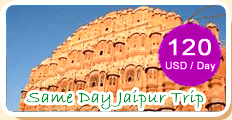

| Jaipur Tour | Mount Abu Tour | Udaipur Tour | Jodhpur Tour | ||
| Jaisalmer Tour | Ajmer Tour | Bundi Tour | Bharatpur Tour | ||
| Pushkar Tour | Ranthambore Tour | Sariska Tour | Shekhawati Tour | ||
| Bikaner Tour | Agra Tour | ||||
PALI
Once inhabited by the Paliwal Brahmins, from whom the place gets its name, ancient Pali housed a highly evolved civilization. The land was leased to the Paliwals by the then chief of Mandore (the former capital of Jodhpur district), which they cultivated diligently, abandoning their former priestly profession. Being a hardworking and intelligent tribe they soon became wealthy and were noticed by the chieftain of Marwar at the time, Raja Sheoji. Wanting to replenish his treasury for the battles which lay ahead Sheoji imposed a war levy on the inhabitants of Pali in 1243AD.
KHEECHAN
Village is situated 130 kms from Jodhpur and 5 kms from Phalodi. This is a natural sanctuary to the bird Kurjan. This bird belongs to South Western Europe, Black sea, Poland, Ukraine, Kazakhstan, North and South Africa and Mongolia. It India, this bird is known as Kurjan, karkara and kunch.
KUMBHALGARH
Located 64 kms north of Udaipur in the wilderness, Kumbhalgarh is the second most important citadel after Chittorgarh in the Mewar region. Cradled in the Aravali Ranges the fort was built in the 15th century by Rana Kumbha. Because of its inaccessibility and hostile topography the fort had remained un-conquered. It also served the rulers of Mewar as a refuge in times of strife. The fort also served as refuge to the baby king Udai of Mewar. It is also of sentimental significance as it is the birthplace of Mewar's legendary King Maharana Partap.
CHITTORGARH
Chittorgarh is the epitome of Rajput pride, romance and spirit. It reverberates with history of heroism and sacrifice, which is evident as it echoes with the tales sung by the Bards of Rajasthan. The main reason for visiting Chittorgarh is its massive hilltop fort, which is a depiction of Rajput culture and values. The fort stands on a 240-hectares site on an 180m high hill that rises rapidly from the plains below.
BARMER
Barmer is a desert town just 153 kms from Jaisalmer and has fortresses to boast off. This place is primarily famous for its woodcarving, furniture and interiors, carpets, block printing and embroideries. The centre for embroidery is the Sadar Bazaar and woodcarvings are around the Station Road. It has an RTDC Hotel and private Hotels too.
PILANI
Once a small village is famous for being the hometown of the premier business and industrial family the Birlas. The town is also for its The Birla Institute of Technology & Science (BITS), Pilani is an all-India Institute for higher education. Its engineering college is reputed to be the top ten colleges in India.
KOTA
An amazing, juxtaposition of majestic medieval age and modern industrialization, mainly the Hydro Electric Plant on the Chambal River and the Nuclear Power Plant has a few traces of its past still left. The fort overlooking the river Chambal is the foremost tourist attraction. It also houses the museum with a rich collection of art and artefacts and some elaborately painted chambers.
JHALAWAR
The princely state of the Jhalas created in 1838 AD, after being separated from Kota by the British. It is best explored by foot within the city and a horse safari in the outskirts as Jhalawar boasts of rich natural wealth, with flora and fauna as active.
TONK
It is located, 96 kms away from Jaipur. This is a quiet town which was ruled by tribes of 'Pathans' from Afghanistan. The focal point of Tonk is the Suneri Kothi, the Golden Bungalow. A fairly ordinary monument from outside, it has stunningly rich ornamental interiors. There are also some interesting building that accommodated the British office.
RANAKPUR
Beautiful sculptured Jain temples mark the glory of this renowned place. Marked as one of the five holy places for the Jain community, these were created in the 15 the century. During the reign of Rana Kumbha and are enclosed within a wall. The central Chaumukha [four faced temple] is dedicated to Adinathji the temple is an astounding creation with 29 halls and 1,444 pillars all distinctly carved and no two being alike is a amazing evidence of the genius sense of architecture that enhances the charm of the place. Every temple has this conceivable surface carved with equal delicacy.
NATHDWARA
Nathdwara lies 48 kms from Udaipur and literally means the gateway to the Lord. This great Vaishnavite shrine was built in the 17th century on spot exactly defined by the Lord himself. The legends have it that the image of the Lord Krishna was being transferred to safer place from Vrindaban to protect it from the destructive wrath of the Mughal Emperor Aurangzeb.
DESHNOK
Deshnok is a small village situated 32 km south from Bikaner city along the Jodhpur Road. It is connected by national highway and rail. It is a pilgrim centre of Karni Mata. Karni Mata, considered as an incarnation of Goddess Durga lived here in the fourteenth century and performed many miracles. Originally the village was called 'dus- nok' meaning ten corners as it was formed by taking ten corners of ten villages.
DUNGARPUR
Huddled in the foothills of the Aravali, Dungarpur has a fascinating landscape of an array of wild and rugged terrain in the northeast to fertile plains of alluvial soil in the southwest. Two rivers the River Mahi and the River Som flow through the area. Rawal Veer Singh founded Dungarpur in 1282 A. D., when he took over this part of the state from Bhil Chieftain Dungaria.
ALWAR
Huddled in the foothills of the Aravali, Dungarpur has a fascinating landscape of an array of wild and rugged terrain in the northeast to fertile plains of alluvial soil in the southwest. Two rivers the River Mahi and the River Som flow through the area. Rawal Veer Singh founded Dungarpur in 1282 A. D., when he took over this part of the state from Bhil Chieftain Dungaria.
BANSWADA
Home to the tribal with Bhils constituting half of the total populations Banswara has its name derived from Bans or bamboo trees, which once grew here in abundance. Maharawal Jamal Singh founded the erstwhile state. With Udaipur and Chittorgarh, forming its boundaries, the district presently comprises of the territories of former Banswara State and the Chieftainship of Kushalgarh.
























